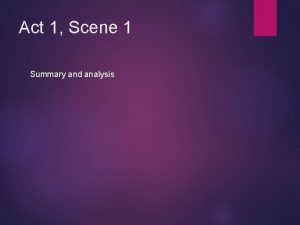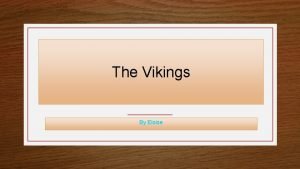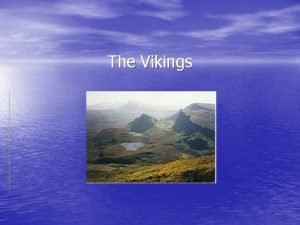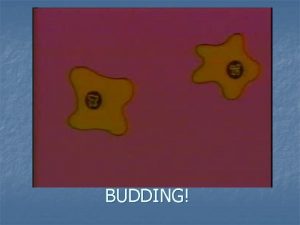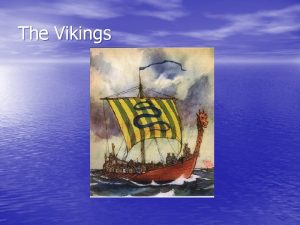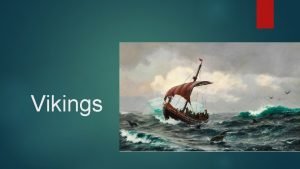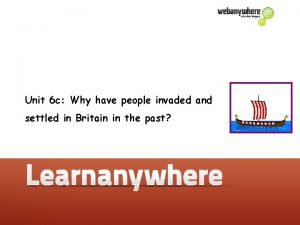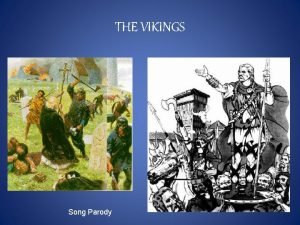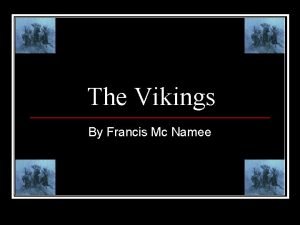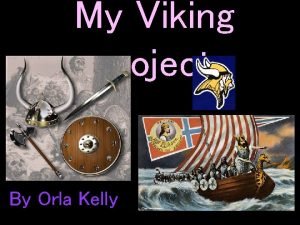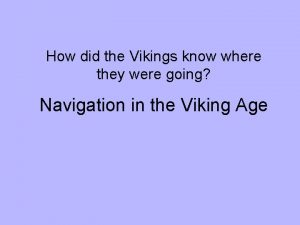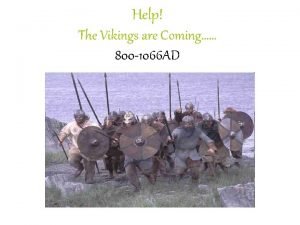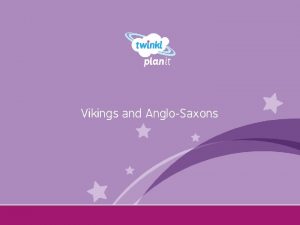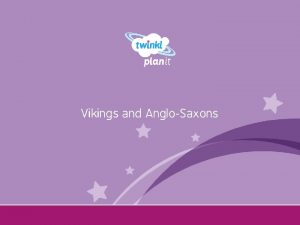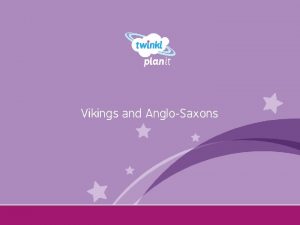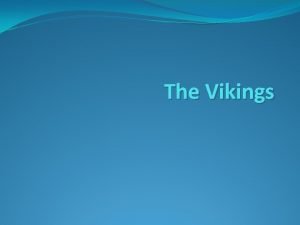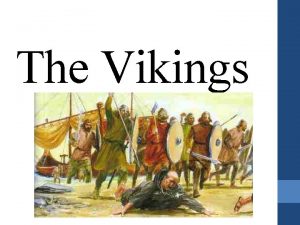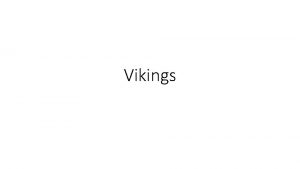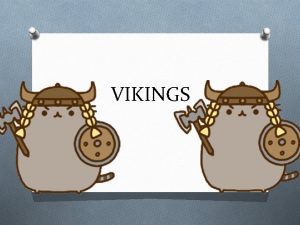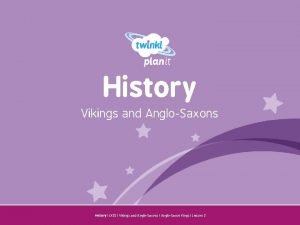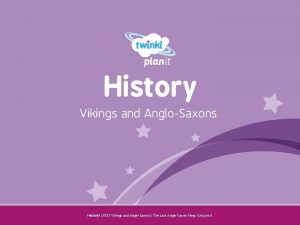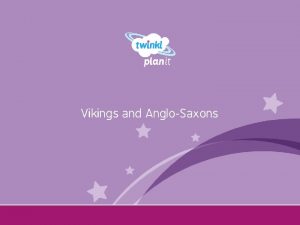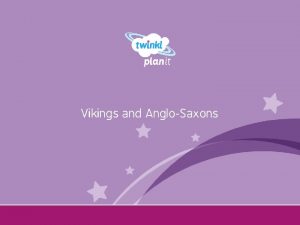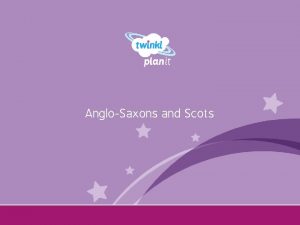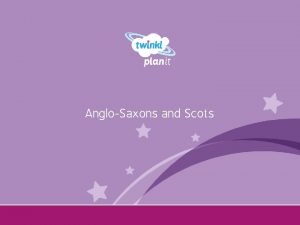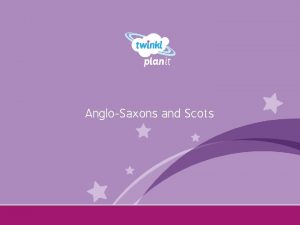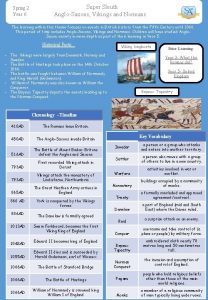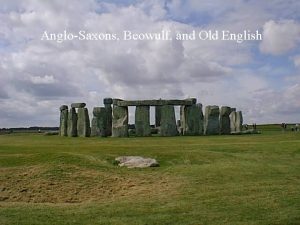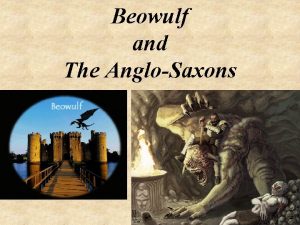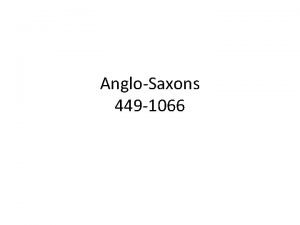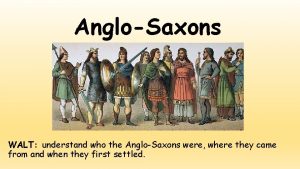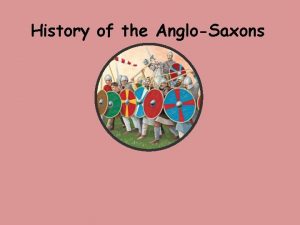Vikings and AngloSaxons Year One I can explain



























- Slides: 27

Vikings and Anglo-Saxons Year One


• I can explain when and where the Vikings came from and why they raided Britain. • I can order events from the time of the Vikings. • I can create a poster containing details about who the Vikings were and what they did. • I can act in role to ask or answer questions.

Questions Discuss these questions with the other children in your group and then be ready to feedback to the rest of the class. • Who were the Vikings? • Where did they come from? • What did they do? • When did they come to Britain and why? • What else do we know about them?

The Vikings came from the area of the modern Scandinavian countries (Denmark, Norway and Sweden). They set out in boats called longships to ‘go Viking’ (which means to go travelling around looking for resources and land to claim as their own). The Vikings first arrived in Britain around AD 787 and in AD 793 they raided and pillaged the monastery at Lindisfarne in Northumbria. Glossary Longship – a long, wooden, narrow boat used by the Vikings. Pillage – to steal goods using violent tactics. Raid – to suddenly attack a place.

The Vikings came to Britain looking for lucrative new items to steal and trade. In addition, they wanted land that they could take and claim as their own. They particularly liked to raid monasteries, like the one at Lindisfarne. The monasteries were not very well protected and contained valuable goods like gold and jewels, imported foods and other useful materials. The Vikings also stole manuscripts and bibles. These were sold back to the religious leaders who could not bear to see them lost or damaged.

The Vikings went on to invade Scotland in time they began to settle and stay there. They were able to build up an army and in AD 866 they captured the city of York. The Anglo Saxon King Alfred the Great, who became King of Wessex in AD 871, managed to force the Vikings out of the South of England but this was short lived. By AD 878 the Vikings had settled permanently in England, overran Wessex and forced King Alfred into hiding. The Vikings were here to stay!


AD 787 The Vikings first arrive in Britain.

AD 787 The Vikings attack from Norway. They attack the Monastery of Lindisfarne in Northumbria. The following year they attack northern Britain, in what we now call Scotland.

AD 866 The Vikings capture the city of York.

AD 870 Wessex is the last Anglo Saxon kingdom.

AD 871 Alfred the Great becomes King of Wessex. He drives the invading Vikings from the south but they stay in the north and the east.

AD 878 By this time, the Vikings had settled permanently in England, overran Wessex and forced King Alfred into hiding.

AD 886 King Alfred agrees to a treaty with the Vikings. Alfred keeps the west and the Vikings are given the east which is later known as ‘Danelaw’.

AD 900 The Vikings establish rule over Scotland.

AD 954 The last Viking King of Jorvick (York), Eric Bloodaxe, is forced out of York.

AD 1013 King Sven of Denmark and his son Cnut sail up the rivers Humber and Trent to claim the throne in Danelaw and Ethelred, the Saxon King, flees abroad.

AD 1014 King Sven dies and Ethelred returns to rule England again.

AD 1016 King Ethelred dies. His son, Edmund Ironside, becomes king for a few months until he also dies. Cnut becomes King of the Danes and King of England.

AD 1035 King Cnut dies. His sons Harold Harefoot and Hardicanute share the ruling of England. Harold dies in 1040 and Hardicanute becomes the sole ruler of England.

AD 1042 Ethelred’s second son, Edward III is invited to return from Normandy to become the King of England. Edward III was better known as ‘Edward the Confessor’ due to his extreme piety.

AD 1066 The last Anglo Saxon king, King Harold, is defeated by William the Conqueror at the Battle of Hastings and Norman Britain begins.


Who thinks they can act in role as a Viking warrior or an Anglo Saxon king to answer the questions the rest of your class may choose to ask you? Questions for a Viking Warrior 1. Who are the Vikings? 2. Where do you come from? 3. When did you come to Britain and why? Or can you think of a question of your own? Questions for an Anglo-Saxon King 1. Where have these Vikings come from? 2. How have you and your people been affected? 3. What have the Vikings done? Or can you think of a question of your own?

• I can explain when and where the Vikings came from and why they raided Britain. • I can order events from the time of the Vikings. • I can create a poster containing details about who the Vikings were and what they did. • I can act in role to ask or answer questions.

 In what year is act one, scene one set?
In what year is act one, scene one set? Twelfth night speeches
Twelfth night speeches Inspirational year 6 leavers poem
Inspirational year 6 leavers poem One god one empire one religion
One god one empire one religion Little dog run
Little dog run One king one law one faith
One king one law one faith Byzantine definition
Byzantine definition One ford
One ford See one do one teach one
See one do one teach one One price policy
One price policy See one do one teach one
See one do one teach one One vision one identity one community
One vision one identity one community Asean one vision one identity one community
Asean one vision one identity one community What vikings drank
What vikings drank Mongols vs vikings
Mongols vs vikings Scandinavian explorers
Scandinavian explorers Viking mushrooms
Viking mushrooms Where did vikings reside
Where did vikings reside Where did the vikings originate from
Where did the vikings originate from Viking whiteboard
Viking whiteboard Danelaw
Danelaw Where did the vikings go
Where did the vikings go Viking love song
Viking love song Vikings mc norway
Vikings mc norway Sf micro soccer
Sf micro soccer Where did the vikings come from
Where did the vikings come from How did the vikings know where they were going
How did the vikings know where they were going The vikings 800 to 1066
The vikings 800 to 1066
